Simple design and clean sound hide an exotic and complex interior.
Kiwi Ears claims the Quintet took almost a year to develop due to the engineering difficulty of combining all its driver types – dynamic, planar, piezo, and BA. They believe that the result is an entirely balanced tone that accurately reflects the best qualities of each driver.
Let’s explore if the Quintet was worth all their time and effort – and yours as well.
- Attractive and yet do not scream, “Look at me!”
- Fit, finish, and fittings
- Excellent stock cable
- Comfortable for long listening sessions
- Stock tuning is inoffensive, balanced, and close to neutral (not sterile)
- Midrange and treble superiority: detail, clarity, and airiness are above average in this price range
- Soundstage and imaging are far above average
- Tuning will have a broad appeal
- Perform well across most genres
- Crossover implementation is smooth, with excellent coherence
- No bothersome BA timbre or harshness
- Useful storage and carry case
- More ear tips would be appreciated
- Modest, and sometimes lacking, bass authority and impact
- The diverse drivers do not truly stand out in their sound (this may be a good thing)
- Overall sound depth and note weight are somewhat lacking – the Quintet are for those who value detail, not for those who prefer warm and full-bodied sound signatures
- Become fatiguing at higher volumes
Company Overview
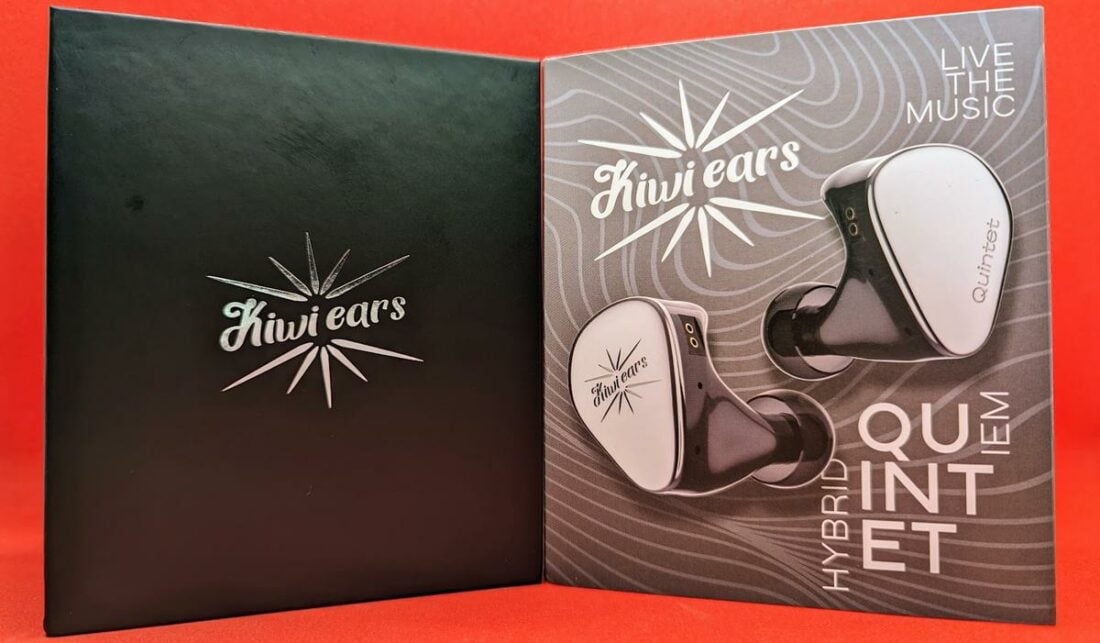
Unboxing and First Impression
Technical Specifications
- Style: In-ear monitor
- Drivers: 1 DLC (diamond-like carbon) dynamic, 2 BA (balanced armatures), 1 planar magnetic, and 1 PZT (piezoelectric) bone conductor
- Impedance: 32 Ohms
- Sensitivity: 106 dB/mW
- Frequency Response Range: 20Hz – 30kHz
- Plug Type: 3.5mm gold-plated straight plug connector
- Pin Type: 0.78mm 2-pin
- Cable Length and Type: 1.2m (4 ft) high-purity silver-plated OFC (Oxygen-free copper core) wire and pre-shaped ear hooks
- Color: Silver and black
- Weight: 8g per IEM (including ear tip)
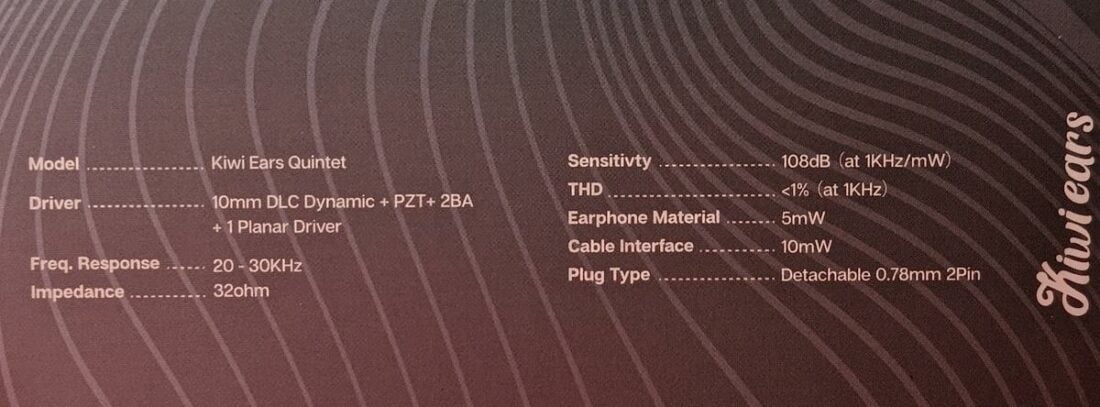
Packaging
A printed sleeve over a simple black box with a silver Kiwi Ears logo is shared with their other IEMs. The basic and straightforward theme carries through the whole Quintet package.
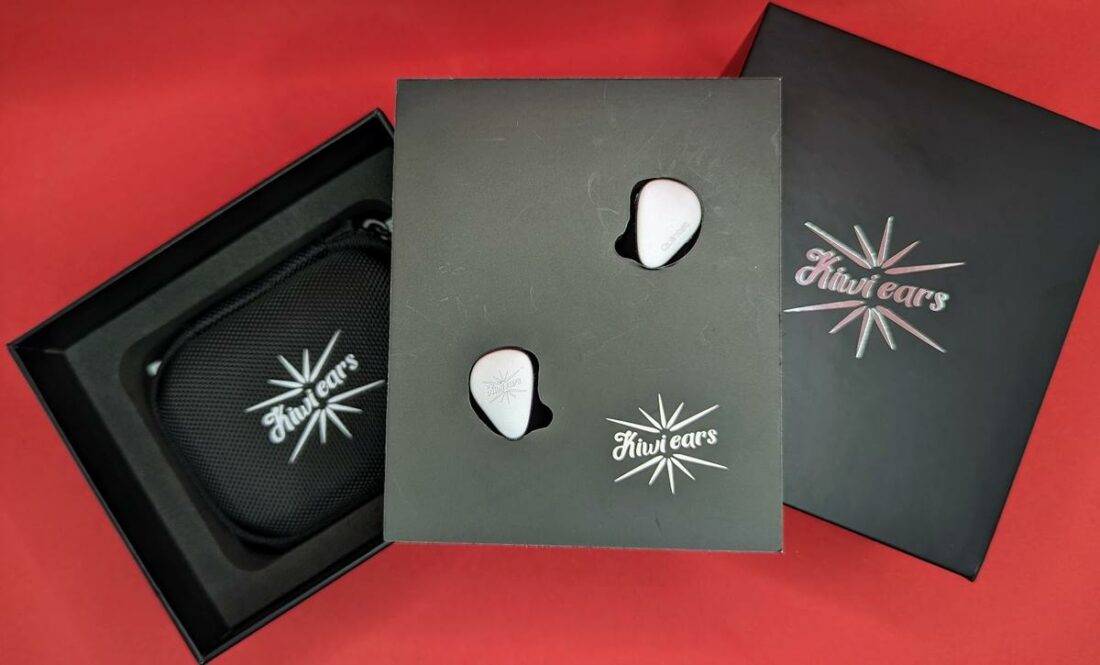
In the box
- Kiwi Ears Quintet IEMs
- Oxygen-free silver-plated copper cable
- Six pairs of silicone ear tips
- Carrying case
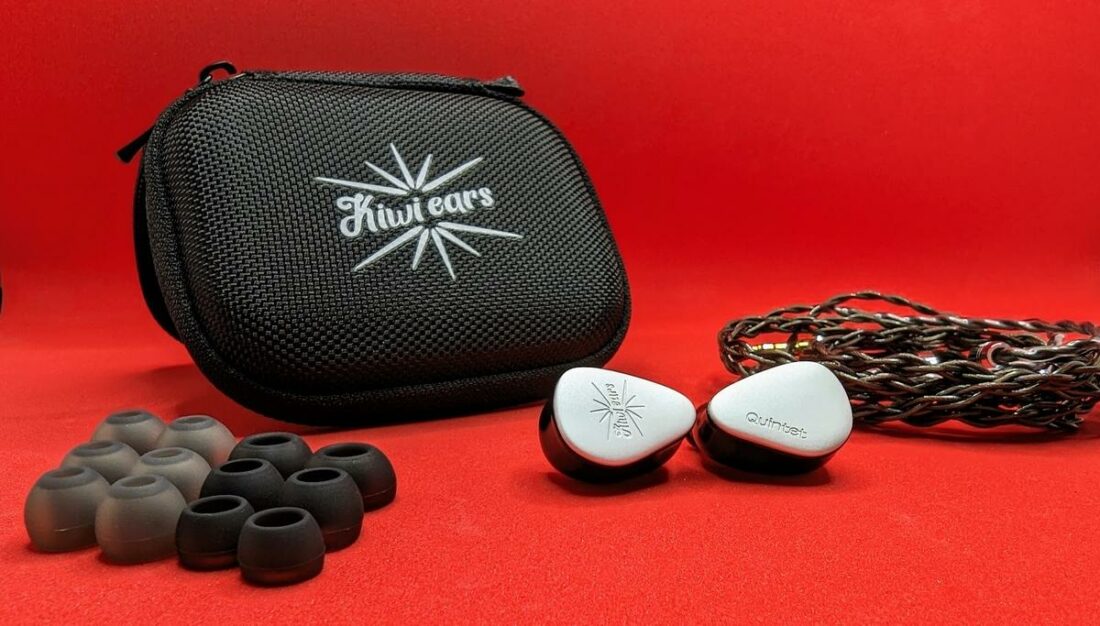
Cable
The Quintet’s 1.2m high-quality silver-plated OFC (oxygen-free copper) cable is attractive, feels great, doesn’t tangle easily, and has strong reinforcements at all contact points. Ear hook sheathing is thin and flexible. The 2-pin connection fits perfectly and is secure. The color, while rich, curiously doesn’t match the IEMs.
There are zero microphonics, which is music to my ears and yours.
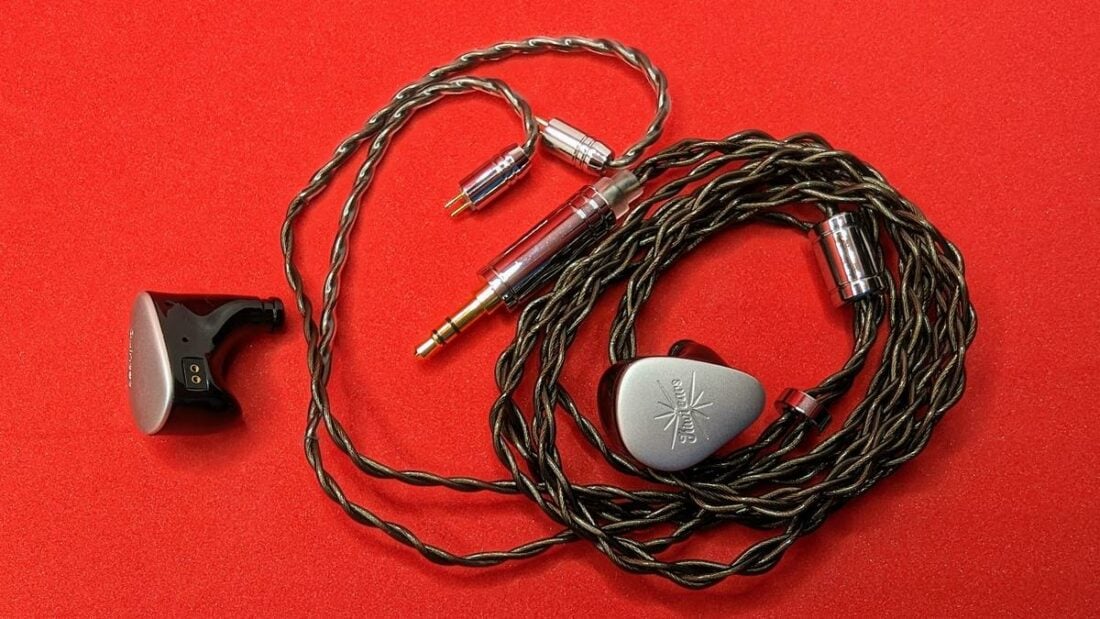
Build & Design
The Quintet joins a metal faceplate to the 3D-printed resin shell, which is large enough to accommodate the five drivers. While they do not look small, they tuck into my ears nicely and do not stick out.
The build feels well-made, and the fit and finish are excellent. According to Kiwi Ears, each Quintet unit undergoes meticulous handcrafting, testing, and pairing. This process is intended to ensure that both the left and right monitors deliver identical sounds, resulting in a flawless listening experience.
The nozzle is of average length, with a larger-than-average diameter bore. Many ear tips will have to stretch far to mount correctly. The nozzles have a lip to secure the ear tips with a metal acoustic filter positioned at the end. The bodies have two small holes, presumably to vent pressure.
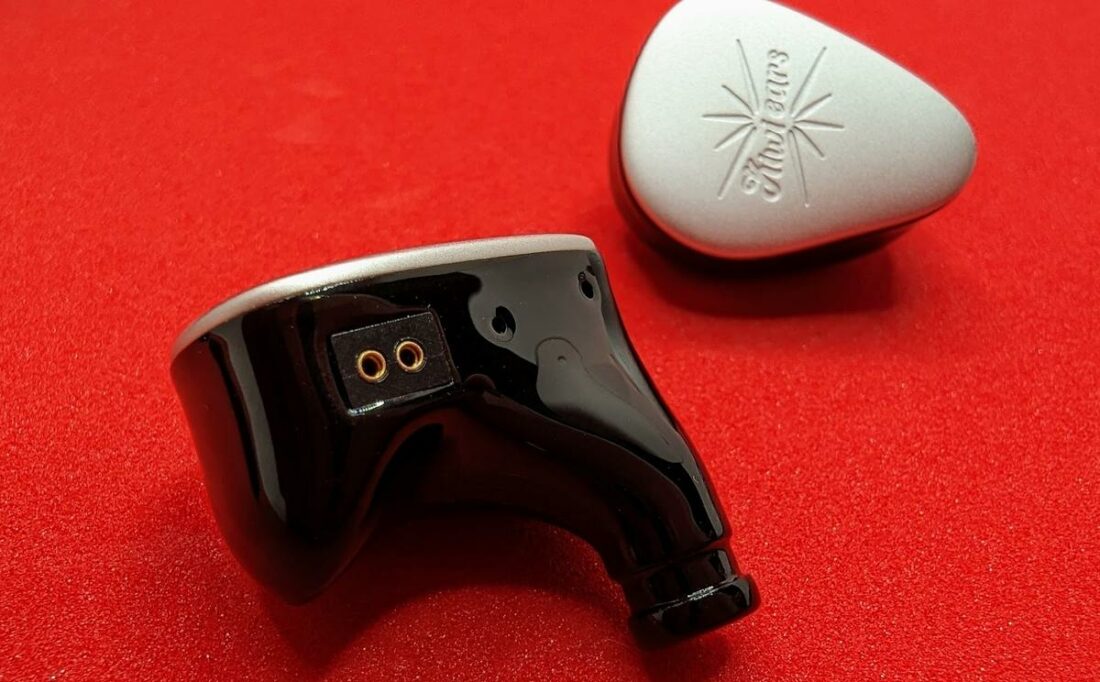
Comfort
The Quintet are all-day comfortable without fatigue.
For universal-fit IEMs, the body shape is excellent. With the help of the ear hooks and a proper seal, they are almost perfectly positioned and balanced.
The included ear tips are different in shape and structure, allowing you to choose what works best for you. Only the black tips seal well for me. Unlike most other IEMs, the Quintet’s sound signature hardly changes with different tips, including memory foam.
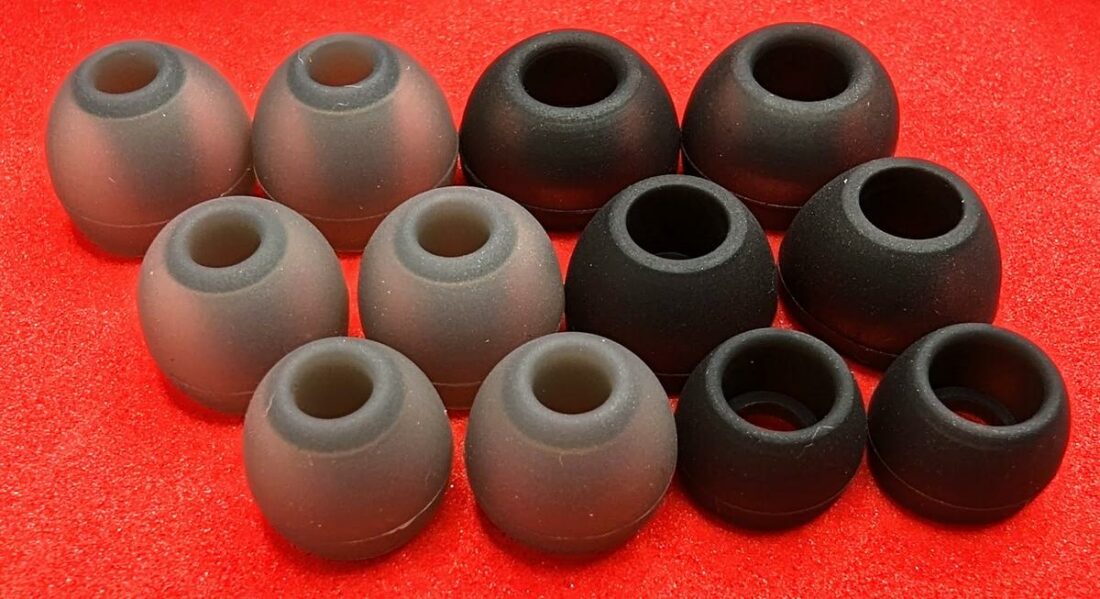
Internals
The Kiwi Ears Quintet utilizes four driver types with a total of 5 drivers per side. These include a 10mm DLC (diamond-like carbon) dynamic driver, 2 Knowles BA drivers, a planar magnetic driver, and one PZT (piezoelectric) bone conductor.
The Quintet have internals akin to an exotic sports car, with a price tag befitting a family sedan.
The large 10mm DLC driver functions as the subwoofer due to DLC’s high responsiveness and tensile strength. DLC is intended to produce impactful bass with fast decay speeds. I’ll have more to say about this in the sound section.
Kiwi Ears developed a new planar tweeter system in the Quintet called MPT (Micro Planar Transducers), designed to deliver low noise, high output, and crisp treble, enhancing audio resolution and texture.
The new tweeters feature classic planar magnetic driver circuitry with a smaller 5mm footprint. They are capable of producing sustained treble frequencies from 4kHz to 40kHz. These drivers have an extremely low noise floor and an astounding output capacity of 118 dB. The piezoelectric driver delivers ultra-treble microdetail and air.
With their unusually eclectic technicals at an affordable price point, the Quintet are headphones that budget audiophiles are talking about this year.
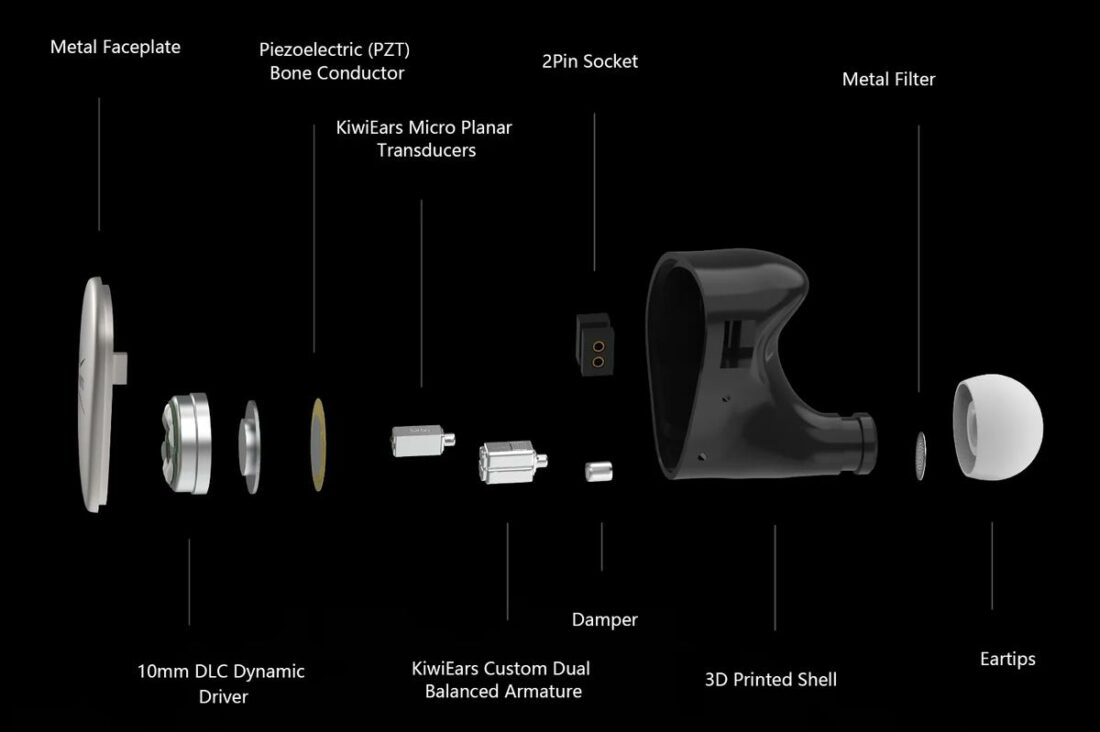
Kiwi Ears Quintet Sound
For evaluation, I listen to a great variety of music through numerous sources, including:
- Sony DVP-S7000 CD Player
- LG V20 & LG V60 phones (both have Quad DAC and headphone jacks)
- Google Pixel 7 Pro
- Lenovo IdeaPad 3
- Khadas Tone2 Pro
- Khadas Tea
- S.M.S.L SP200 Headphone Amplifier
- HIFIMAN EF400 Headphone Amplifier
- HELM Audio Bolt and DB12 AAAMP
The Quintet are easy to drive, with an impedance of 32 ohms and a high sensitivity of 106 dB. Insertion depth is average and will yield average passive sound isolation with adequately seated and sealed ear tips.
A balanced sound signature is a core belief at Kiwi Ears. The Quintet are designed to offer this, combining the best qualities of each driver type. Kiwi Ears aimed for impactful bass, neutral upper mids, detailed treble, and an extended soundstage.
On their website, Kiwi Ears provides extensive detail on the drivers, their effect on the sound signature, and their definition of balance. My ears tell me they came close, and there is not too much marketing hyperbole.
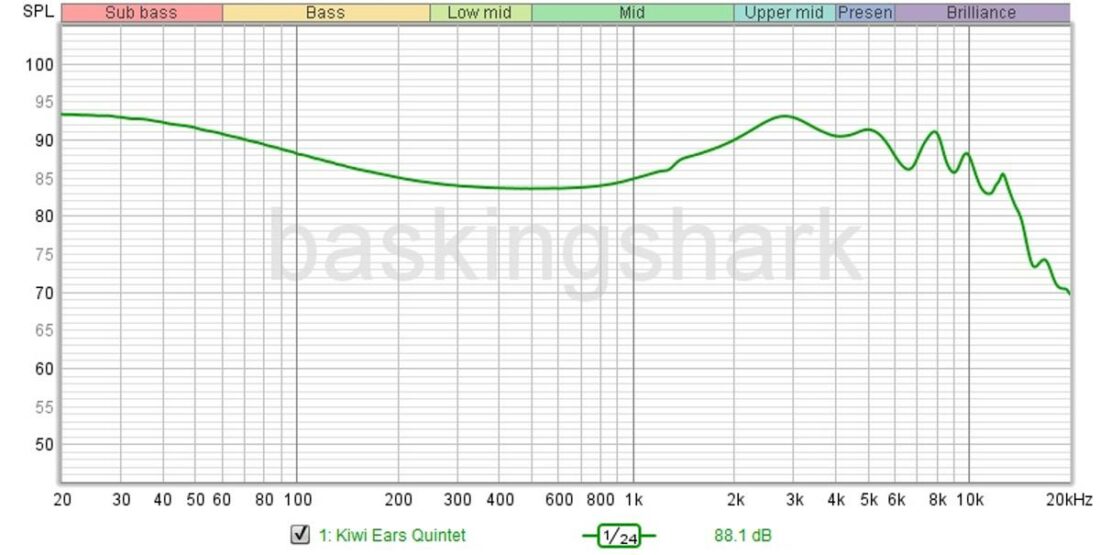
Because of the complexity of the driver mix, I continue to be surprised by the Quintet’s smooth transitions and high coherence, a defining characteristic of excellent implementation. Kiwi Ears products exude competence. The team certainly seems to know what they are aiming for. They hit the target with the Quintet.
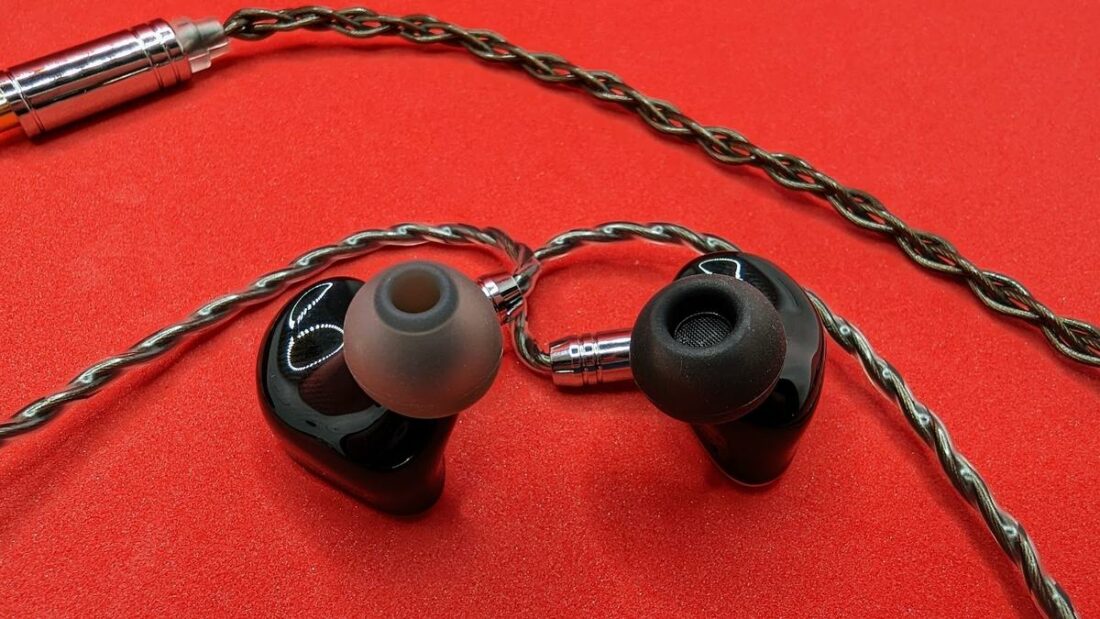
For this review, I visited the following artists and their home locations:
- Netherlands: Voilà by Emma Kok
- Taiwan: HOMELAND (Taiwan Folk Metal) ft. Jayant Bhadula of Bloodywood by NiNi Music
- UK: The Grey (Official ‘War Of Being’ Game Visualiser) by TesseracT
- United States: Let The Truth Speak by Earthside
- Argentina: Color Esperanza by Diego Torres
A fascinating collection from several continents, these diverse musical productions range in ethnic origins, musical styles, and explorations in audio.
Bass
Bass response, speed, and decay are competent, with good texture and musicality. The quantity is adequate for most genres except for electronic and bass-heavy music. Despite the almost perfect-for-me frequency response graph and Kiwi Ears’ assertion that the dynamic driver is subwoofer-like, I don’t hear or feel it enough, regardless of ear tips.
While musical and well-controlled, the dynamic driver lacks the low-frequency grunt and impact I expected.
The bass extension is there. It’s just not as present and full as it should be, creating the sense that the Quintet are always airy sounding. The glide into mid-bass and midrange is excellent, with no notable infringement. There is no distortion until I press the drivers with EQ adjustments.
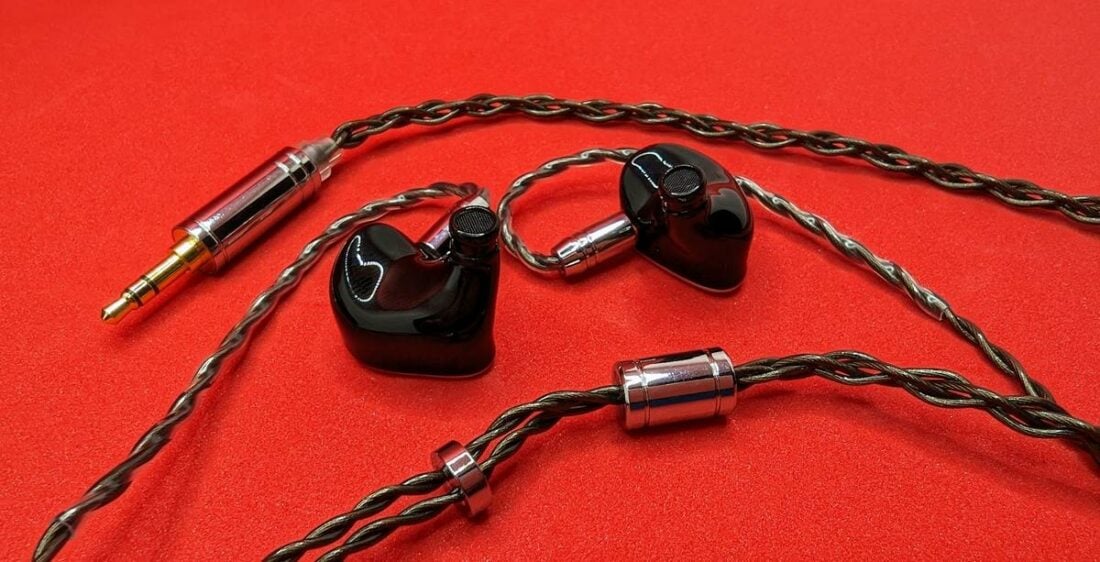
Midrange
The midrange and the treble are the stars of the Quintet show, sounding clear and natural with good timbre. There is no sense that the mids are tucked, recessed, or veiled. Vocal-centric and instrumental music sounds fantastic.
The Quintet excel at portraying the illusion of a large and wide soundstage, likely due to a unique tuning of the mids and upper mids, plus the physical space management inside the bodies and the large tubes. Despite this, the center imaging is precise.
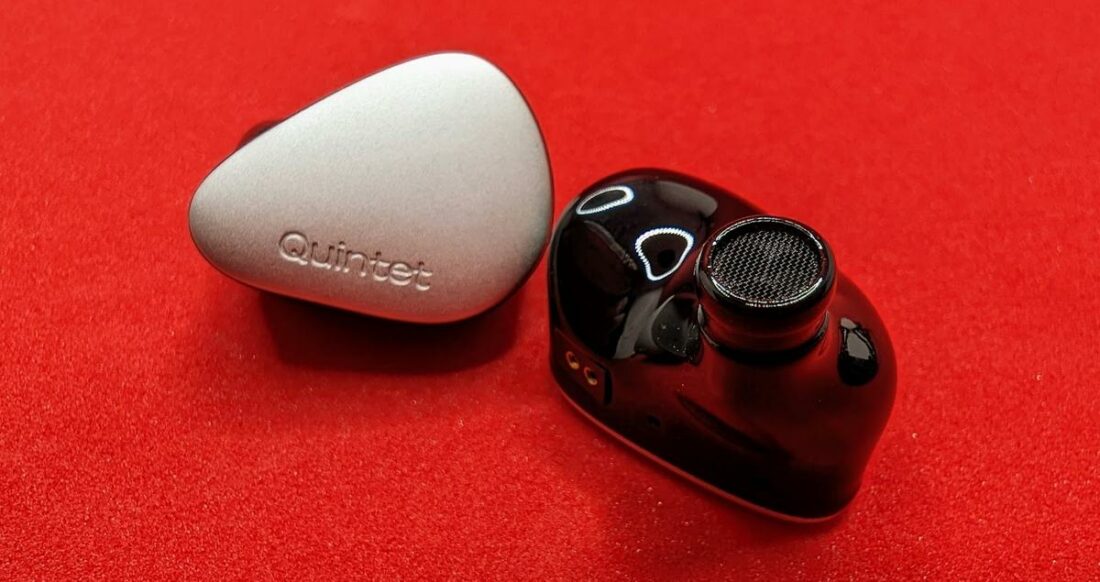
Treble
Kiwi Ears states that the treble accurately peaks at 3kHz to match the acoustic perception of the human ear’s pinna, with a gradual decay into the upper treble. The Quintet’s combination of high-frequency drivers is beautifully clear and composed, with high detail and crisp clarity. They are revealing and rival IEMs in a significantly higher price bracket.
As a result, there are tradeoffs. The first is that the amount of detail and clarity can become fatiguing, especially at higher volumes, becoming quite demanding of your attention. You may find this exhilarating or exhausting – or both.
The second tradeoff is that the Quintet occasionally gives me the impression of lighter note weight and can lack the intimacy of other IEMs designed with a different objective. The high detail and airiness of the treble exaggerate this observation.
Where to Buy
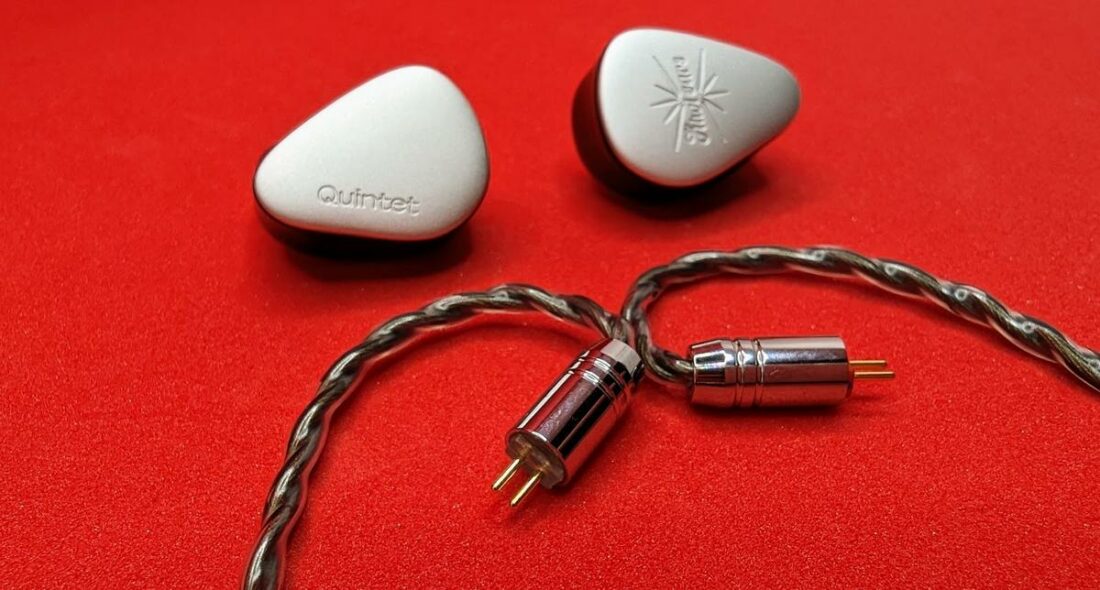
Conclusion
The Quintet deserve attention for their technical prowess and praise for their execution. They are an excellent example of compromise yielding an above-par all-around performer despite not having any stand-out ability in any area of the frequency range.
The Quintet excel in achieving the rare combination of large soundstage and precise imaging, with exceptional clarity and treble extension in their price range. Based on the complex configuration, hybrid driver combination, sound, and comfort, the Quintet sound much more expensive than they are and are a solid value.
For me, the Quintet are an achievement and a display of Kiwi Ears’ abilities in R&D, experimentation, and execution. I have a hunch that the complexity of the Quintet are both a technical test case and a market test.
I’m intrigued that the Kiwi Ears Orchestra Lite IEM is in a similar price bracket, with eight BA drivers/side (full review coming soon). I expect Kiwi Ear’s learning and technology will be shared with future IEMs. I certainly hope so. Either way, the Quintet are good enough not to be in a hurry. Well done!
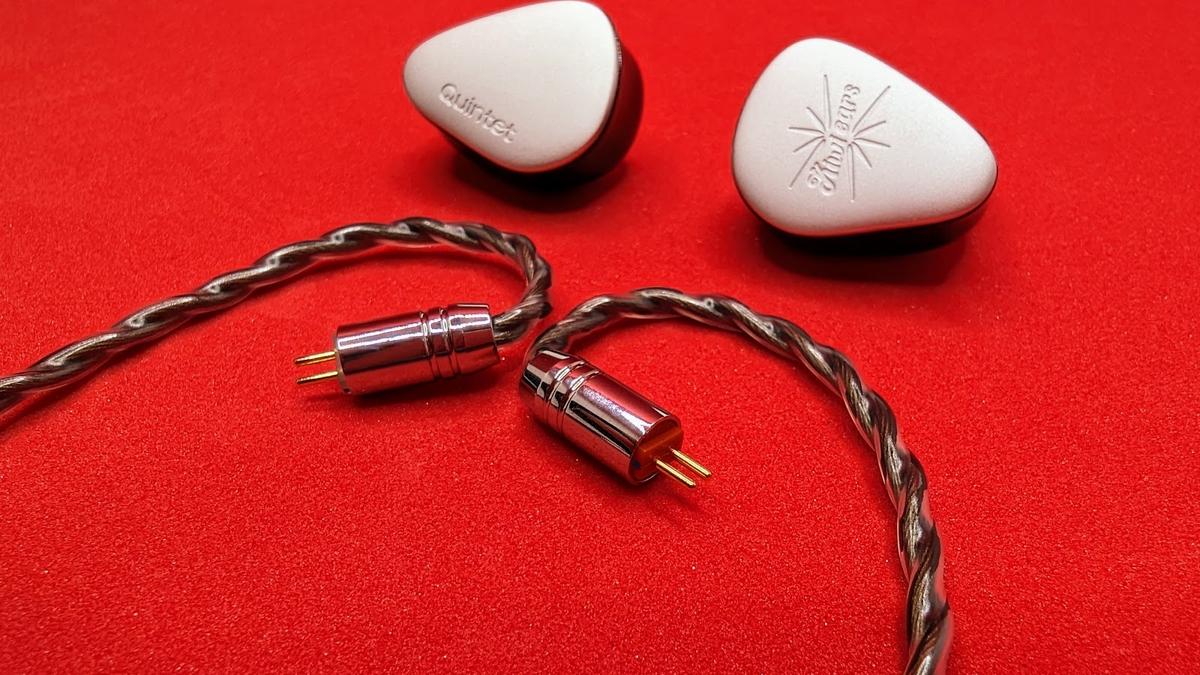
How is kiwiears quintet compared to geekwold gk100 in resolution,imaging and seperation?
Thanks for your question – I do not have any experience with that brand yet. Do you own those already? I hope that someone else will chime in here with firsthand experience of both. This may provide some insight if you do not own them: https://www.headphonesty.com/2023/04/review-geek-wold-gk100/